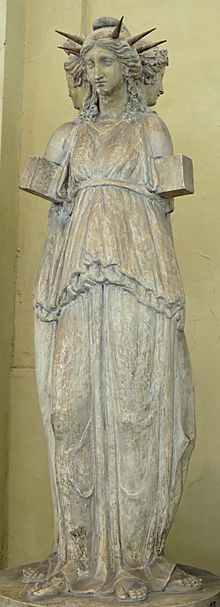Hecate
Hecate was a Titan goddess, who was a powerful anomaly. Unlike most deities with specific domains, she held sway over a vast and seemingly disparate realm – magic, the night, the moon, ghosts, and the underworld. This tripartite nature made her unique, a bridge between the celestial, terrestrial, and chthonic realms. Her power transcended boundaries, making her a figure both revered and feared.

Residence: The Underworld
Symbols: Paired torches, black dog, polecat
Parents: Perses and Asteria
Siblings: Aeetes, Circe, Empusa, Pasiphae and Scylla
Abduction of Persephone
Hecate’s presence marked a transformation in Demeter’s grief. Initially, Demeter’s search was fueled by despair. Hecate, with her torches and connection to the underworld, offered not just light but perhaps a glimpse into the reality Persephone now inhabited. By becoming Persephone’s companion, Hecate offered a form of solace to Demeter, a way to connect with her daughter even within the darkness of the underworld.
Companions
The origins of Hecate’s companions weren’t just whimsical; they held deeper meaning. Both the dog (Hecuba) and the polecat (either Gale or Galinthias) were transformed as a form of punishment. Yet, Hecate, a goddess associated with the fringes of society, chose to adopt them. This act of redemption hinted at Hecate’s own outsider status and her empathy for those who dwell in the shadows. She transformed punishment into companionship, finding value in the ostracized.
Art






